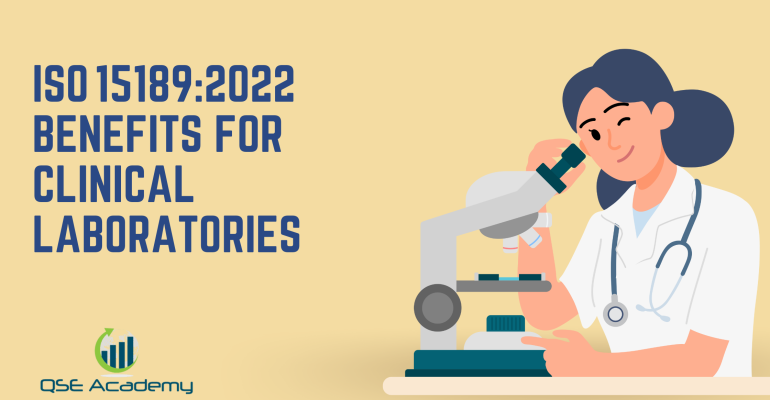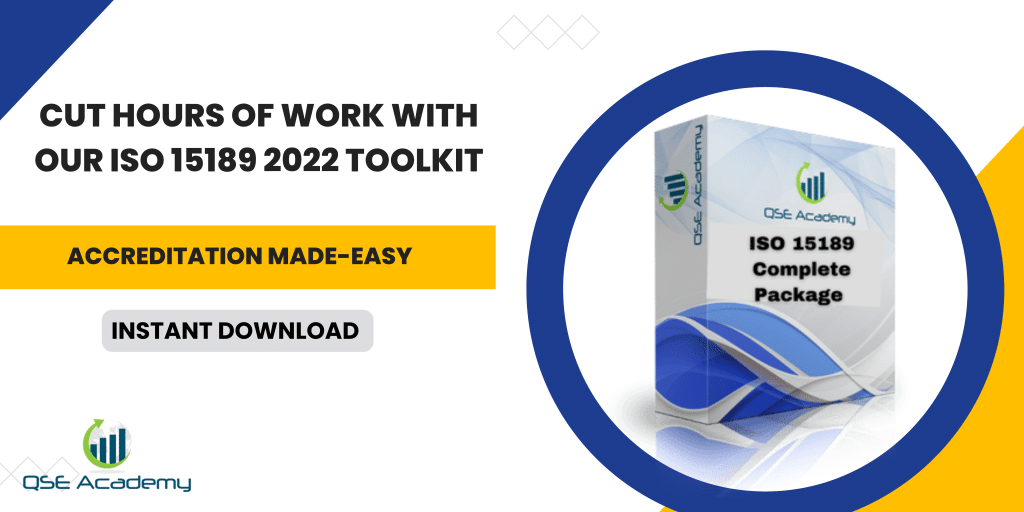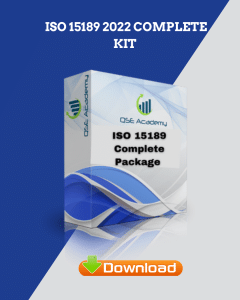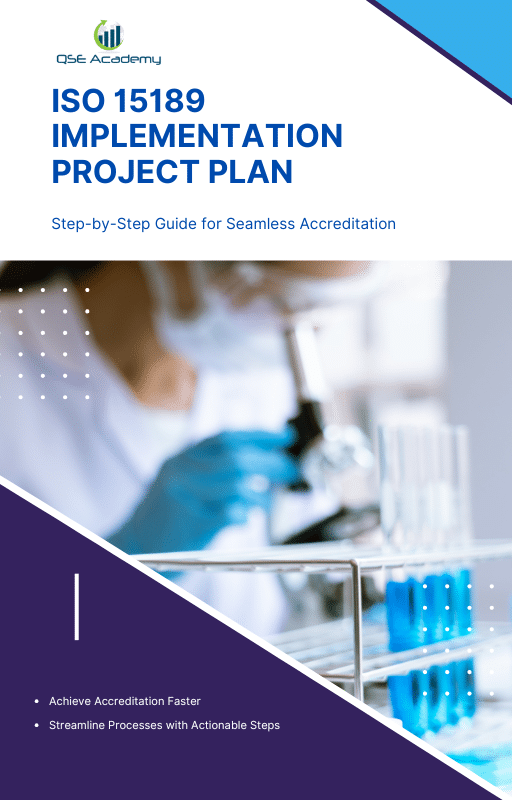ISO 15189:2022 Benefits for Clinical Laboratories
Last Updated on October 22, 2025 by Hafsa J.
Why ISO 15189:2022 Is a Game-Changer for Clinical Labs
Every clinical lab I’ve worked with eventually hits the same realization: good intentions aren’t enough when it comes to patient safety and diagnostic reliability. You can have skilled staff, quality equipment, and solid results—but if you can’t prove your competence, regulators and clients won’t take your word for it.
That’s where ISO 15189:2022 changes the game.
It’s not just another standard—it’s the global benchmark that defines what a truly competent, reliable, and patient-centered medical laboratory looks like. ISO 15189 builds confidence in every test result, protects patients, and helps labs operate at the highest professional level.
I’ve seen labs go from inconsistent, paper-heavy systems to fully integrated operations that run smoother, report faster, and win more trust—just by aligning with this standard.
In this article, we’ll unpack the real-world benefits of ISO 15189 accreditation:
how it improves diagnostic accuracy, strengthens your quality system, builds staff competence, and turns your lab into a recognized name in healthcare excellence.
By the end, you’ll understand why ISO 15189:2022 isn’t just an option for clinical labs—it’s an investment in long-term credibility and patient trust.
Enhancing Diagnostic Accuracy and Patient Safety
When you strip away all the formal language, ISO 15189 is really about one thing — getting the right result to the right patient at the right time.
Clinical labs deal with more than numbers and specimens; they handle decisions that affect lives. ISO 15189 builds accuracy and safety into every part of that process — from how samples are collected and stored, to how instruments are calibrated and results are verified.
Here’s what makes the difference:
-
Every method must be validated or verified before use.
-
All equipment must be traceable to international standards.
-
Staff must demonstrate competence before performing clinical tests.
-
Errors and near-misses are tracked, analyzed, and corrected — not hidden.
The result? A culture of prevention instead of reaction.
One lab I worked with used ISO 15189’s risk-based approach to trace a recurring issue with incorrect glucose readings. The problem wasn’t the analyzer—it was inconsistent sample handling at collection. Fixing that simple process step reduced critical result errors by 80% within two months.
Pro Tip:
Don’t wait for external audits to spot errors. Use ISO 15189’s internal audit and risk assessment tools to find and solve problems before they ever reach the patient.
By embedding quality at every stage, ISO 15189 helps labs transform testing from routine to reliable, and results from acceptable to absolutely trusted.
Now that we’ve covered the foundation—accuracy and safety—let’s look at how ISO 15189 strengthens your lab’s Quality Management System (QMS) as a whole.
Strengthening Quality Management Systems (QMS)
A lot of labs think they already have a “quality system” because they keep good records or run internal audits. But ISO 15189 takes that idea and elevates it into something far more structured and sustainable — a true Quality Management System (QMS) that connects every activity to one goal: consistent, reliable patient care.
Here’s how it strengthens your QMS in practice:
-
It forces you to standardize procedures so every staff member performs tasks the same way, every time.
-
It introduces data-driven monitoring, meaning you no longer rely on gut feeling to know if performance is slipping.
-
It builds internal audit and CAPA (Corrective and Preventive Action) processes right into your workflow, turning every issue into an opportunity for improvement.
One of my clients, a regional hospital lab, used ISO 15189 to unify their separate testing departments under a single QMS. Within six months, turnaround times dropped, complaints decreased, and staff actually started taking ownership of quality metrics — because they could see the connection between their actions and patient outcomes.
Common Pitfall:
Many labs treat documentation as bureaucracy. In ISO 15189, documentation is the evidence of competence and control. When done right, it becomes your best management tool — not red tape.
Pro Tip:
Think of your QMS as a living system. Update it as your lab evolves. The more it reflects how you really work, the easier it becomes to maintain accreditation and drive improvement.
Once your QMS is in place, the next big win comes from your people. Let’s talk about how ISO 15189 builds competence, confidence, and accountability within your team.
Building Staff Competence and Accountability
You can have the best equipment in the world — but without competent, confident people, your results will never be truly reliable. ISO 15189 recognizes this and makes personnel competence one of its strongest pillars.
Unlike older frameworks that simply require staff qualifications, ISO 15189 focuses on demonstrated competence — proof that your team not only knows what to do but can consistently do it right.
Here’s how it changes the culture inside a lab:
-
Each staff member has a clear job description tied to required skills and responsibilities.
-
Ongoing training and evaluations ensure employees stay up to date with new test methods or technologies.
-
Supervisors take on the role of mentors, not just managers, providing feedback and technical guidance.
-
Errors become learning opportunities through structured competency assessments and CAPA follow-ups.
In one lab I supported, management introduced quarterly competency reviews aligned with ISO 15189. Within a year, retraining costs dropped and error rates in hematology testing fell by 35%. The staff felt empowered instead of scrutinized — because the system helped them succeed rather than punish mistakes.
Pro Tip:
Turn competency tracking into a positive, growth-oriented process. Use it to identify training needs early and to celebrate progress. Nothing motivates staff more than seeing their expertise recognized and documented.
Bottom line: When everyone understands their role and feels accountable for quality, your lab doesn’t just meet ISO 15189 — it lives it.
Now that your team is operating at a higher level, let’s see how that translates into smoother operations and measurable efficiency gains.
Increasing Efficiency and Reducing Waste
One of the biggest surprises for labs implementing ISO 15189 is just how much time, money, and effort they save once processes become standardized and measurable.
Efficiency isn’t about cutting corners—it’s about eliminating chaos.
ISO 15189 pushes your lab to map out every process, define clear responsibilities, and monitor performance indicators. When you do that, waste becomes obvious and improvement becomes achievable.
Here’s what typically happens after accreditation:
-
Fewer sample re-runs because of better validation and verification methods.
-
Shorter turnaround times because workflows are streamlined and responsibilities are defined.
-
Lower reagent and consumable costs due to controlled inventory and proper calibration schedules.
-
Less downtime thanks to preventive maintenance and documentation that actually works.
Example:
A hospital microbiology lab I worked with used ISO 15189’s process mapping to pinpoint bottlenecks in sample reception. By adjusting staffing and logging turnaround data daily, they reduced delays by 45% in three months—without adding a single employee.
Pro Tip:
Track a few meaningful metrics—like sample rejection rates, turnaround time, or error trends—and review them monthly. Those numbers tell your real quality story and help management make smart, evidence-based decisions.
When a lab runs efficiently, doctors trust it more, and patients get faster, safer results. That leads to something every lab needs more of—confidence.
Elevating Patient and Physician Confidence
At the end of the day, clinical laboratories exist for one reason — to support better medical decisions.
Every doctor’s diagnosis and every patient’s treatment plan depends on the accuracy of your results. That’s why ISO 15189 doesn’t just focus on systems and procedures — it focuses on trust.
When your lab is ISO 15189 accredited, that trust becomes visible.
Physicians know your methods are validated, your staff are competent, and your processes are monitored for accuracy. Patients, too, gain reassurance knowing that their test results come from a laboratory that meets international standards of quality and ethics.
Here’s how accreditation builds confidence:
-
Doctors stop questioning inconsistencies between labs — your reports become the reference point.
-
Patients and healthcare networks prefer your lab because accreditation communicates credibility and reliability.
-
Referral rates often increase, as other facilities see you as a trusted partner rather than just another vendor.
Example:
A private diagnostic center I worked with displayed their ISO 15189 accreditation certificate in all client-facing areas and on their website. Within six months, they reported a 30% increase in physician referrals—simply because doctors knew they could rely on consistent quality.
Pro Tip:
Don’t keep your accreditation quiet. Use it as a communication tool—include your ISO 15189 status on reports, marketing materials, and digital platforms. It reminds every client and patient that their trust is well-placed.
When your lab earns confidence through performance, it opens the door to new collaborations—and that’s where ISO 15189’s global recognition makes a real difference.
Enabling International Recognition and Partnerships
One of the most powerful advantages of ISO 15189 accreditation is that it doesn’t stop at your country’s borders. It gives your laboratory a global identity—recognized, respected, and trusted by organizations around the world.
Here’s why: ISO 15189 accreditation is granted by national accreditation bodies that operate under the International Laboratory Accreditation Cooperation (ILAC). Through ILAC’s Mutual Recognition Arrangement (MRA), accredited laboratories gain automatic international recognition. That means your results are accepted by other accredited labs, regulatory agencies, and clinical partners across member countries—without the need for retesting or revalidation.
In practical terms, that recognition can open huge doors:
-
International clinical trials: Sponsors prefer ISO 15189-accredited labs because it simplifies regulatory approval.
-
Cross-border collaborations: Your results hold credibility with foreign hospitals and research institutions.
-
Exported test reports: Results from ISO 15189-accredited labs are trusted abroad, saving clients time and cost.
Example:
A diagnostic laboratory in Malaysia achieved ISO 15189 and was later invited to partner in multi-country infectious disease studies led by European institutions. Before accreditation, they weren’t even considered. Accreditation didn’t just improve their quality—it expanded their reach.
Pro Tip:
If your lab operates in a competitive market or wants to partner with international organizations, ISO 15189 gives you instant legitimacy. It tells potential partners that your processes, people, and systems already meet the highest international expectations.
Of course, global recognition isn’t just about prestige—it’s also about compliance and reducing risk. Let’s look at how ISO 15189 helps you stay ahead of regulators while protecting your lab from costly mistakes.
Supporting Regulatory Compliance and Risk Mitigation
Every lab has to deal with regulators — but not every lab is ready when they come knocking. ISO 15189 helps you change that. Instead of scrambling for inspections, you’ll already be operating within a system that anticipates compliance and manages risk proactively.
Here’s how it works:
-
It aligns perfectly with most national health regulations (like CLIA in the U.S. or DOH standards in the Middle East).
-
It requires you to document everything that affects quality, from equipment calibration to corrective actions.
-
It builds risk-based thinking into your processes—so potential issues are identified, evaluated, and mitigated before they escalate.
I once worked with a mid-sized pathology lab that used ISO 15189’s risk framework to track every incident, no matter how small. They discovered that minor sample transport delays were causing subtle shifts in results for temperature-sensitive tests. By addressing that risk early, they prevented what could have been a major compliance breach during a regulatory inspection.
Pro Tip:
Treat ISO 15189 as your compliance insurance policy. When auditors or regulators visit, you’ll already have everything they expect — documented processes, corrective actions, and objective evidence of control.
Bonus Benefit:
Accredited labs rarely face penalties or operational disruptions because their systems are already aligned with national and international requirements. That stability is worth more than any single audit pass.
So far, we’ve covered how ISO 15189 improves operations, safety, and compliance. But it also does something more powerful — it helps your lab grow.
Driving Business Growth and Competitive Advantage
Here’s a truth most lab owners don’t realize at first:
ISO 15189 accreditation isn’t just about quality — it’s a business growth strategy.
When your lab earns accreditation, you gain more than a certificate on the wall. You gain trust, market credibility, and new opportunities that directly impact your bottom line.
Here’s how it drives growth:
-
More contracts and clients. Hospitals, insurance providers, and pharma companies often require ISO 15189 as a condition for collaboration.
-
Competitive differentiation. In crowded markets, accreditation instantly sets you apart. Clients know you’ve already been vetted for competence and reliability.
-
Improved efficiency = higher margins. Reduced rework, fewer errors, and leaner operations mean lower operating costs.
-
International partnerships. With ILAC-MRA recognition, your lab becomes eligible for cross-border research and reference testing work.
Example:
A private diagnostic network in India achieved ISO 15189 accreditation across all branches. Within a year, they secured government tenders and partnerships with global NGOs working on infectious disease programs. Their revenue grew by 28%—not because they changed what they did, but because accreditation changed how the world saw them.
Pro Tip:
Use your accreditation in marketing, proposals, and client onboarding. Don’t just say you’re accurate—show that an international body confirms it. That level of validation builds confidence faster than any sales pitch.
When quality and business goals align, your lab stops chasing contracts—and starts attracting them.
Now, let’s wrap things up with a few common questions lab managers ask before deciding to invest in accreditation.
FAQs – Real-World Questions from Lab Leaders
1. Is ISO 15189 accreditation expensive?
It depends on your lab’s size and readiness, but think of it as an investment, not a cost. Most labs recover their expenses within a year through improved efficiency, fewer errors, and new business opportunities. The real expense is operating without a system that prevents waste and builds trust.
2. Do small labs benefit as much as large ones?
Absolutely. In fact, small labs often see results faster. Their size allows for quicker implementation and cultural change. I’ve seen two-person clinics achieve accreditation and gain referral partnerships from major hospitals simply because they could demonstrate ISO 15189-level reliability.
3. Does ISO 15189 replace national or regional licenses like CLIA?
No—it complements them.
Licenses such as CLIA are legal requirements, while ISO 15189 is a quality and competence framework that elevates your lab above the legal minimum. Holding both shows regulators and clients that your lab is both compliant and world-class.
4. How long does it take to get accredited?
Typically, labs take 6–12 months, depending on their preparedness. The timeline can shorten if you already follow good documentation and quality practices. A pre-assessment or gap analysis can reveal exactly where to focus your efforts.
5. What if we lose accreditation later?
ISO 15189 accreditation is maintained through ongoing surveillance audits. As long as you keep your QMS alive—reviewing risks, training staff, and acting on nonconformities—you’ll stay compliant. Accreditation isn’t a one-time event; it’s a continuous commitment to quality.
From Compliance to Excellence
ISO 15189:2022 is more than a checklist—it’s a complete transformation in how clinical laboratories think, work, and deliver results.
It takes you from simply complying with regulations to leading with quality, trust, and purpose.
Labs that embrace ISO 15189 don’t just improve their systems—they redefine their reputation. Doctors rely on them. Patients trust them. Regulators respect them. And business partners seek them out because they know their data is in safe hands.
In my experience, the most successful laboratories share one common mindset: they treat ISO 15189 not as a task, but as a culture.
It’s about embedding accuracy, safety, and improvement into everything your team does—whether it’s a routine CBC test or a high-stakes molecular diagnosis.
Pro Tip:
If you’re just starting out, don’t get overwhelmed by the documentation. Begin with a gap analysis to see where you already align with ISO 15189. You’ll be surprised how many strengths your lab already has—you just need to organize and prove them.
Final Thought:
In healthcare, credibility is currency. ISO 15189 accreditation turns that credibility into confidence—confidence in your lab, your people, and every single result you release.
Next Step:
If you’re ready to take your lab from compliance to excellence, QSE Academy’s ISO 15189 Accreditation Toolkit and implementation guides can help you get there faster—with templates, checklists, and expert support built specifically for clinical laboratories.
Whether it’s ISO 9001, ISO 22000, or the cosmetics-focused ISO 22716, I’ve spent my career I’m not here to call myself an expert—I prefer “enthusiast” because I truly love what I do. When I’m not writing about standards, you’ll probably find me playing Piano 🎹, connecting with people, or diving into my next big project💫. I’m an engineer specialized in the food and agricultural industry
make ISO standards less intimidating and more approachable for everyone.
turning complex jargon into clear, actionable steps that businesses can actually use.
There’s something incredibly rewarding about helping people navigate food safety and quality management systems
in a way that feels simple, practical, and even enjoyable.
I have a Master’s in QHSE management and over 12 years of experience as a Quality Manager
I’ve helped more than 15 companies implement ISO 9001, ISO 22000, ISO 22716, GMP, and other standards
My clients include food producers, cosmetics manufacturers, laboratories, and service companies
I believe quality systems should be simple, useful, and efficient.













